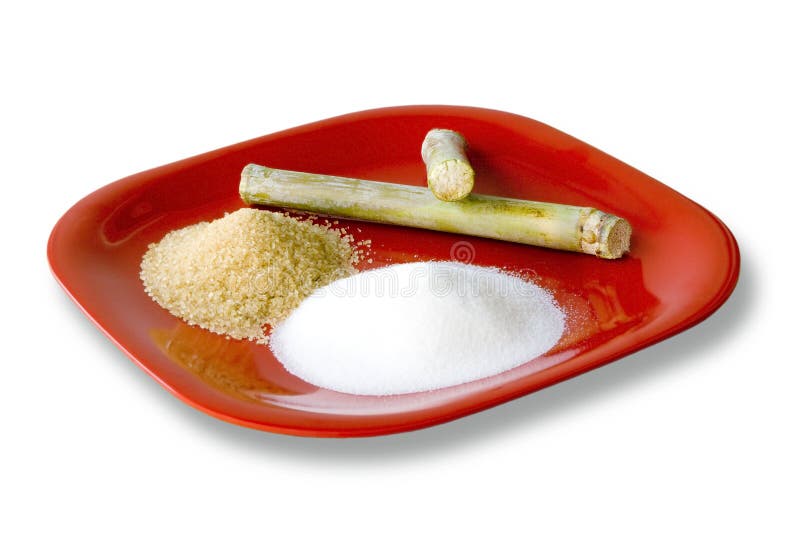The Trip of Sugarcane: From Harvest to Everyday Products
The journey of sugarcane is a multifaceted procedure that begins with careful cultivation and finishes in a variety of items that permeate our day-to-day lives. As we explore the numerous facets of sugarcane's trip, its role in sustainability and the more comprehensive implications for our setting come into sharper emphasis.
Cultivation of Sugarcane
The growing of sugarcane is a vital farming process that needs specific ecological problems and management techniques. Optimal growth takes place in subtropical and tropical areas where temperatures range in between 20 ° C and 32 ° C. Adequate rainfall or irrigation is crucial, as sugarcane flourishes in damp dirt with well-drained conditions (sugarcane product). Soil top quality significantly influences return; hence, farmers frequently perform dirt tests to identify nutrient needs
Growing generally happens in rows, making use of stem cuttings known as setts, which are planted horizontally. This technique promotes effective gathering and makes the most of sunlight exposure. Plant rotation and intercropping are recommended techniques to boost soil fertility and minimize parasite infestations. Furthermore, farmers utilize incorporated pest monitoring approaches to minimize chemical inputs while ensuring healthy crop development.
Prompt application of these fertilizers can substantially improve sugar returns. In general, effective sugarcane growing pivots on a combination of ecological stewardship, tactical preparation, and ongoing monitoring practices.
Collecting Techniques
Effective sugarcane cultivation culminates in the harvesting stage, which is pivotal for optimizing yield and making sure high quality. The timing of the harvest is essential; sugarcane is normally harvested when sucrose levels height, normally in between 10 to 18 months after planting. This duration differs based on climate, dirt kind, and sugarcane variety.
Gathering strategies can be broadly categorized right into manual and mechanical techniques. Hand-operated harvesting is labor-intensive, relying on knowledgeable workers who utilize machetes to reduce the stalks short. This technique permits for selective harvesting, where just the ripest walking sticks are chosen, consequently boosting total sugar content.
On the other hand, mechanical harvesting has actually obtained appeal due to its efficiency and cost-effectiveness. Specialized harvesters furnished with reducing blades and conveyor systems can refine huge locations promptly, significantly decreasing labor expenses. This method may lead to the inclusion of immature canes and a potential decrease in sugar quality.

Despite the approach utilized, making sure that gathered canes are transported swiftly to refining facilities is important. Prompt handling decreases wasting and protects the integrity of the sugarcane, establishing the phase for optimal handling.
Handling Methods
Handling sugarcane includes several critical actions that transform the collected stalks right into usable items, mostly sugar and molasses. The initial phase is washing the walking cane to eliminate soil and particles, followed by the removal of juice with squashing or milling. This procedure generally uses heavy rollers that damage the walking stick fibers to launch the wonderful fluid consisted of within.
Once the juice is drawn out, it undergoes explanation, where impurities such as dirt particles and bagasse are gotten rid of. This is commonly attained by adding lime and heating the juice, enabling sedimentation. The cleared up juice is after that focused via dissipation, where water content is reduced, resulting in a thick syrup.

Eventually, the handling of sugarcane not only produces sugar and molasses yet also lays the foundation for different by-products, which will certainly be discovered in succeeding discussions.
Products Derived From Sugarcane
Sugarcane is a versatile plant that yields a vast array of products past just sugar and molasses. Among the main byproducts are ethanol and biofuels, which have actually obtained prominence as renewable energy resources. Ethanol, created via the fermentation of sugarcane juice, acts as an alternative to nonrenewable fuel sources and is commonly combined with fuel to develop cleaner-burning gas, reducing greenhouse gas emissions.
Furthermore, sugarcane is a considerable source of why not find out more bagasse, the fibrous residue staying after juice extraction. Bagasse is used in different applications, including the production of paper, naturally degradable product packaging, and as a biomass fuel for energy generation. Its use not only reduces waste but also enhances the sustainability of sugarcane handling.
In addition, sugarcane-derived items reach the food industry, where it serves as an all-natural flavoring agent and sugar in different culinary applications. In the realm of cosmetics, sugarcane removes are integrated into skin care items because of their natural exfoliating residential or commercial properties.
Ecological Effect and Sustainability
The growing and handling of sugarcane have considerable implications for ecological sustainability. This crop requires significant water resources, frequently leading to exhaustion of local water products and impacting bordering environments. Additionally, making use of fertilizers and chemicals in sugarcane farming can lead to dirt deterioration and river contamination, posturing dangers to biodiversity.

Sustainable sugarcane farming also advertises dirt health with plant turning and reduced resource tillage, improving carbon sequestration. The fostering of these techniques not only sustains ecological integrity however additionally boosts the resilience of farming neighborhoods versus environment adjustment.
Conclusion
In summary, the journey of sugarcane includes different phases from farming to handling, inevitably resulting in a broad range of products. The relevance of sugarcane expands past plain sugar, adding to renewable power through ethanol production, sustainable product packaging using bagasse, and all-natural removes for cosmetics. This complex plant plays an essential function in both nutritional enrichment and ecological sustainability, highlighting its value in modern agricultural and industrial practices.
Successful sugarcane cultivation finishes in the collecting stage, which is crucial for maximizing return and making certain top quality. The timing of the harvest is critical; sugarcane is typically collected when sucrose degrees height, typically between 10 to 18 months after planting.Handling sugarcane includes a number of crucial steps Get the facts that change the gathered stalks into usable items, mostly sugar and molasses.Sugarcane is a flexible crop that generates a large range of products past just sugar and molasses. Additionally, the usage of fertilizers and pesticides in sugarcane farming can result in dirt deterioration and waterway air pollution, presenting risks to biodiversity.
 Kel Mitchell Then & Now!
Kel Mitchell Then & Now! Gia Lopez Then & Now!
Gia Lopez Then & Now! Freddie Prinze Jr. Then & Now!
Freddie Prinze Jr. Then & Now! Shannon Elizabeth Then & Now!
Shannon Elizabeth Then & Now! Andrew McCarthy Then & Now!
Andrew McCarthy Then & Now!